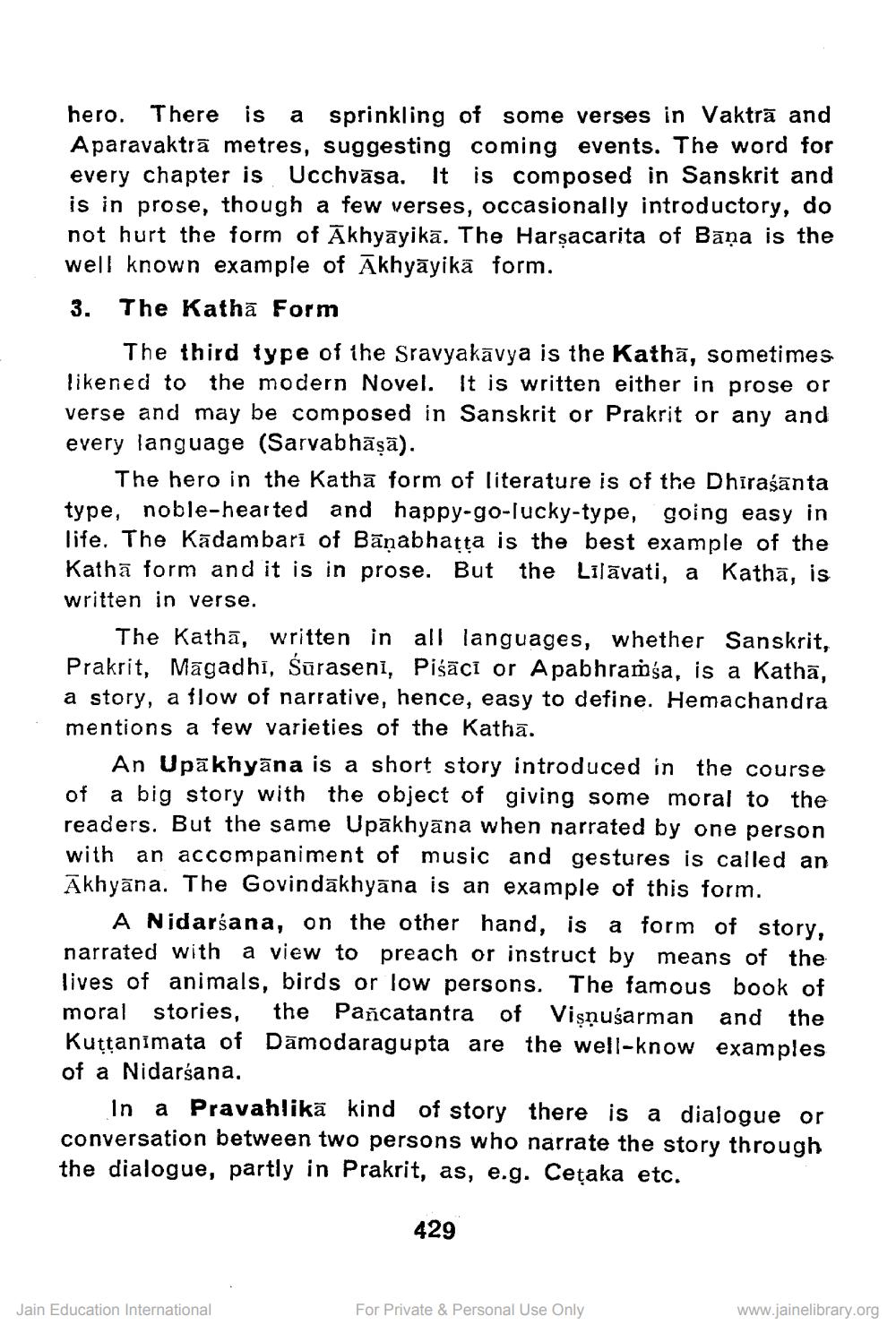________________
hero. There is a sprinkling of some verses in Vaktra and Aparavaktrā metres, suggesting coming events. The word for every chapter is Ucchvāsa. It is composed in Sanskrit and is in prose, though a few verses, occasionally introductory, do not hurt the form of Akhyāyikā. The Harṣacarita of Bāņa is the well known example of Akhyāyikā form.
3. The Katha Form
The third type of the Sravyakavya is the Katha, sometimes likened to the modern Novel. It is written either in prose or verse and may be composed in Sanskrit or Prakrit or any and every language (Sarvabhāṣā).
The hero in the Katha form of literature is of the Dhirasanta type, noble-hearted and happy-go-lucky-type, going easy in life. The Kadambari of Baṇabhatta is the best example of the Katha form and it is in prose. But the Lilavati, a Katha, is written in verse.
The Katha, written in all languages, whether Sanskrit, Prakrit, Magadhi, Śūraseni, Pisaci or Apabhramsa, is a Katha, a story, a flow of narrative, hence, easy to define. Hemachandra mentions a few varieties of the Katha.
An Upakhyana is a short story introduced in the course of a big story with the object of giving some moral to the readers. But the same Upakhyāna when narrated by one person with an accompaniment of music and gestures is called an Akhyāna. The Govindakhyāna is an example of this form.
A Nidarśana, on the other hand, is a form of story, narrated with a view to preach or instruct by means of the lives of animals, birds or low persons. The famous book of moral stories, the Pañcatantra of Viṣṇusarman and the Kuṭṭanimata of Damodaragupta are the well-know examples of a Nidarśana.
In a Pravahlikä kind of story there is a dialogue or conversation between two persons who narrate the story through the dialogue, partly in Prakrit, as, e.g. Cetaka etc.
Jain Education International
429
For Private & Personal Use Only
www.jainelibrary.org




